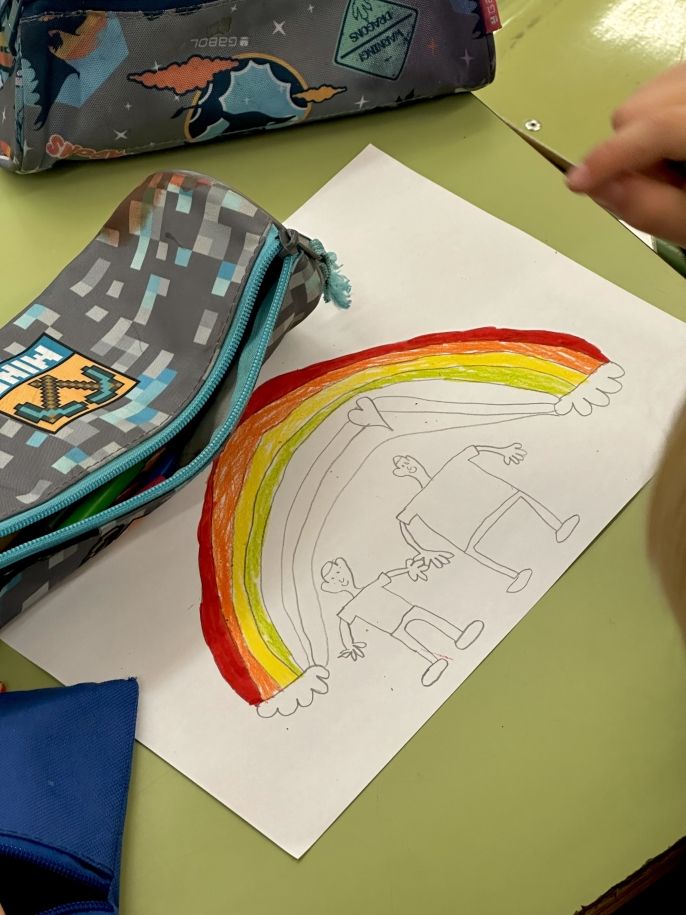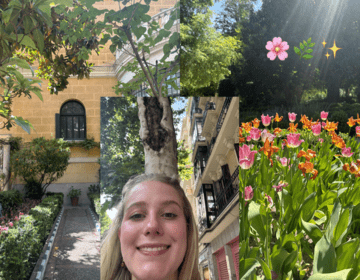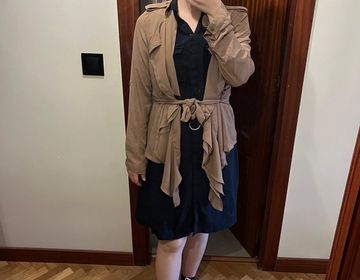How Different are Spanish Schools to American Schools?
My understanding of Spanish primary schools is that they are mostly very similar to schools in the United States. The children are just as adorable (and rowdy), the teachers work well together (though there still tends to be some headbutting here and there), people are friendly, and the curriculum is thorough. With that said, there are quite a few major (and minor) differences that I have picked up on since starting work in October.
Recreo/Desayuno.
In many Spanish primary schools, like the one I work at, many of the students do not eat a typical lunch at school but instead have "breakfast" or "desayuno" at recess. This usually happens around 11/11:30am, and many of the students will snack on a small sandwich, a small pastry, yogurt, or fruit. During this time the teachers also have a 30 minute break. Most schools will provide teachers with coffee, tea, and typical Spanish foods like tortilla de patatas, small pastries, and pan con tomate. Many students go home at 2:00pm while others sign up to stay at school for lunch.
Relaxed dress code for teachers.
In the United States, most schools require teachers to dress a bit more formally. The most notable dress code difference being that typically teachers are not allowed to wear blue jeans. Here in Spain, teachers always dress nice, but jeans are totally acceptable. I tend to think this system works much better as all the teachers look professional and put together even with their jeans. You likely won't see teachers in sweatpants, but jeans and a nice top, or even a cute t-shirt, are totally fine.
Cursive writing.
My experience with learning cursive in The United States was kept to just a few months in the third grade. Cursive was hardly ever a requirement, let alone used, when I was growing up in The States. In Spain, though, even my students as young as kindergarten almost exclusively write in cursive. There is a huge emphasis on penmanship as well.
Teachers often move grades with their students.
This can occasionally happen in The States, but typically American teachers stay at the same grade level for years. In Spain it is very common for teachers to move up grade levels with their students. For example, the two second grade teachers I work with were with the same students in first grade, and will be with the same students again in third grade.
Learning British English.
Of course, in the U.S. we learn American English at school. Here in Spain the students learn British English. I have to constantly brace myself when I have to ask my students for a "rubber" instead of an "eraser".
The students are a lot more physically affectionate.
My students are so affectionate and constantly hugging and squeezing me. In the United States it is not really a norm for students to be physically affectionate with their teachers, so this was definitely a major shock to me. And, as much as it can be hard to move around with a handful of 7 year olds stuck to your leg, I love how affectionate the children are here. It reminds you that they are just little children and it shows how comfortable they are at school with their teachers. Of course, though, this tends to stop as kids get a bit older.
Different pencils and crayons.
Okay, I admit that this one is a little particular, but it stuck out to me immediately. As Americans we are mostly used to Crayola crayons and Ticonderoga pencils, but here in Spain they use a completely different brand and style of pencils and crayons. The weirdest thing to me is that the pencils dont have an eraser attached, but I tend to prefer the Spanish crayons.
Overall, most of these differences here have been more than easy to accept. A nice late-morning snack and coffee break and hugs from adorable kids are nothing to complain about. If you are excited and nervous to start working as a Language Assistant, take it from me: you'll more than likely fit right in. Language barriers can be tough, and it might feel a bit awkward the first few days, but once your settled it will stop being scary and will just be a part of your life.
Related Posts
Why I'm renewing my contract as a Language and Culture Assistant in Spain
In a city as surprising and beautiful as Madrid, I’m not quite ready to leave.
What to Wear While Teaching in Spain
Ah, the eternal question…what to wear? The dilemma takes on new relevance when you’re living and working abroad. If you’re like me, you don’t want to stick out very much... keep reading
What I'll Miss Most About Living in Madrid
My time living in Madrid is coming to an end. With less than 40 days left, I’ve been reminiscing on the things I love most about Madrid. Living here has... keep reading



